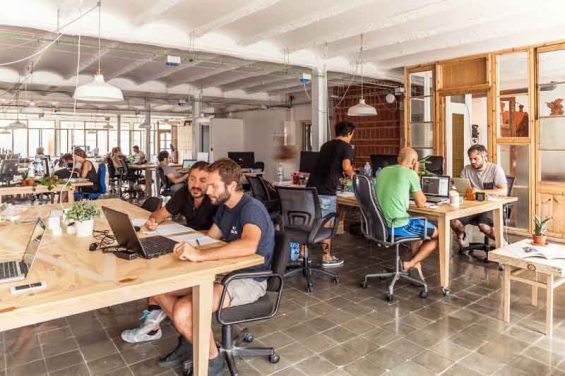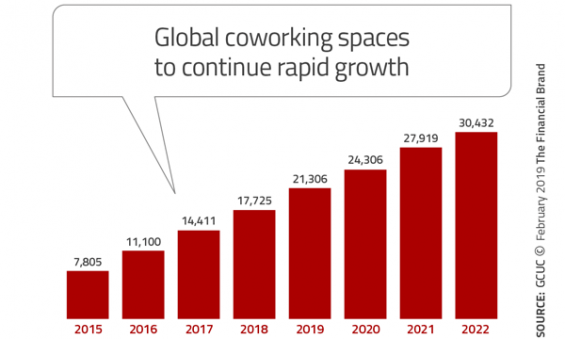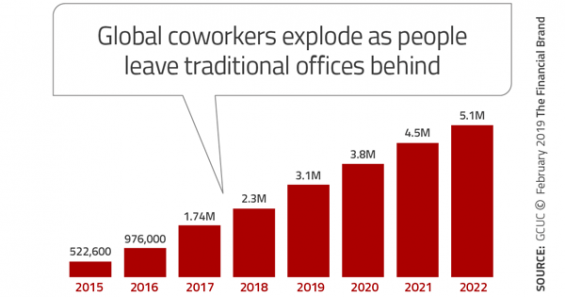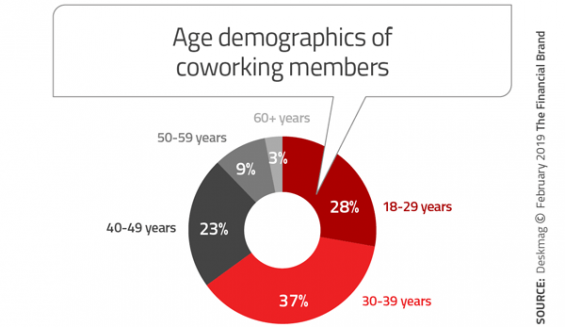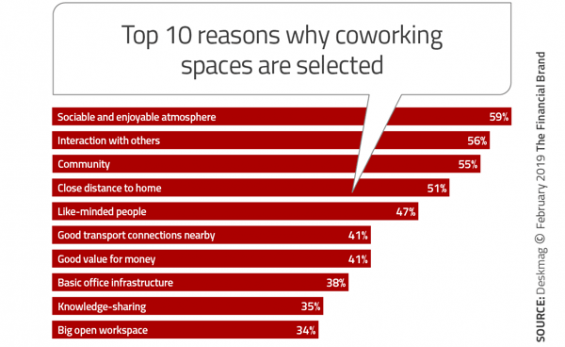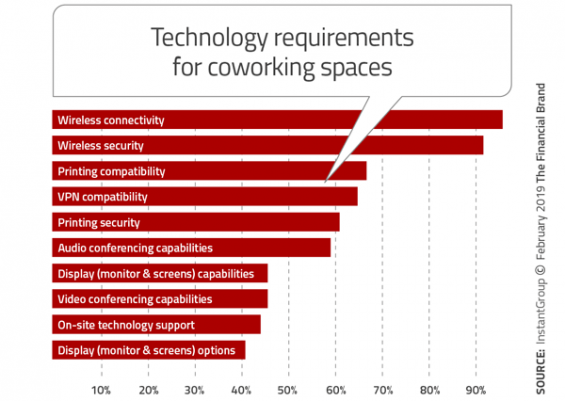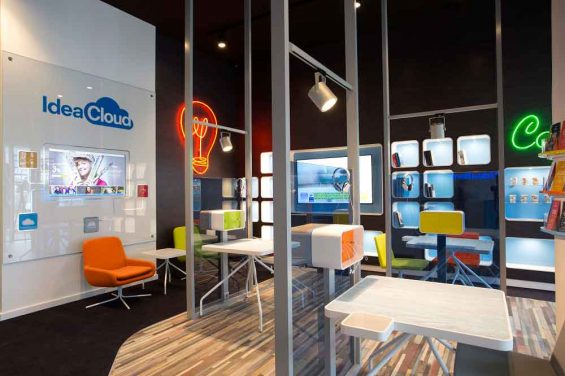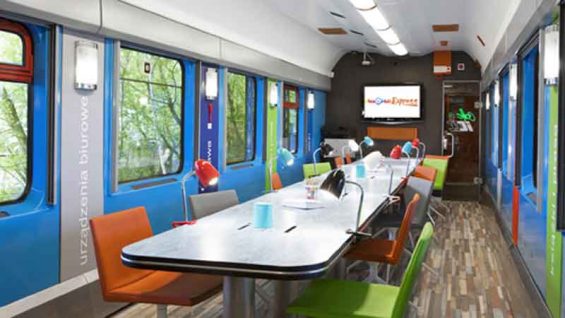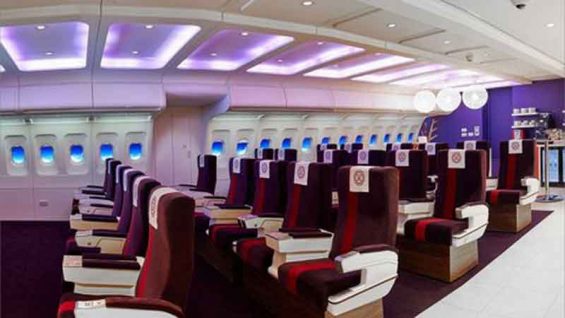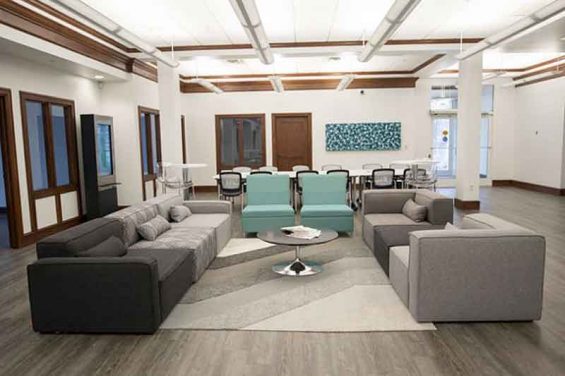As digital banking replaces visits to the branch office, many banks and credit unions are faced with increasing amounts of underutilized office space. While organizations like Capital One have opted for a coffee shop concept, other financial institutions are beginning to sublet or create coworking spaces for small businesses not yet ready for larger facilities of their own. This can create greater small business engagement, improved onboarding options, a source for new lending relationships and even additional cash flow.
Some banking organizations have already pursued this option as the demand for coworking space globally explodes. Coworking became popular around 2010, as an outgrowth of shared office facilities that provided singular offices with centralized conference rooms, telephone operators and printing capability. The transformation of coworking space has an emphasis on high speed WiFi, high-tech functionality, modern decor, open spaces and even on-site food and beverage. Some of the larger players in the space include a reformatted Regus and relative newcomer, WeWork.
Read More: Trends in Branch Design From Banks and Credit Unions Around The World

Unlocking Digital Acquisition: A Bank’s Journey to Become Digital-First
This webinar will offer a comprehensive roadmap for digital marketing success, from building foundational capabilities and structures and forging strategic partnerships, to assembling the right team.
Read More about Unlocking Digital Acquisition: A Bank’s Journey to Become Digital-First

Move the Needle from Attrition to Acquisition
Vericast’s 2024 Financial TrendWatch explores seven of today’s most critical financial services trends to provide a complete view of the current loyalty landscape.
Read More about Move the Needle from Attrition to Acquisition
Demand for Coworking Space Accelerates
The highly flexible space coworking sector has emerged as the primary growth driver within the office market industry. In 2017, expansion in this sector represented more than a quarter (29.4%) of the total U.S. office absorption. With the continued growth of the coworking industry, venture capital is beginning to flow in, fueling growth that shows no signs of slowing.
According to the publication deskmag, “A typical coworking space has on average around 80 members, working at 70 desks spread over an area of around 8,500 square feet. The average occupancy is roughly 1.2 members per desk.” Interestingly, private offices within these spaces are becoming more popular, with desks having the flexibility to be used by multiple people.
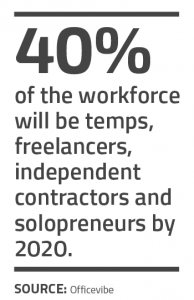 As private shared offices increase, the amount of space dedicated to conference rooms and event spaces has decreased. Most coworker facilities still have coffee, food and lounge areas much like the offices in the Silicon Valley.
As private shared offices increase, the amount of space dedicated to conference rooms and event spaces has decreased. Most coworker facilities still have coffee, food and lounge areas much like the offices in the Silicon Valley.
Coworking members are not only tech professionals and startups. Coworkers include part-time workers, freelancers, as well as workers who may be part of much larger corporations in a sales, marketing or creative role. By 2022, it is believed that there will be over one million coworking members in the U.S. alone.
Organizations like Microsoft, IBM, Verizon and even HSBC are using coworking spaces in order to promote innovation and collaboration in more engaging workplaces. While some organizations may place multiple people in the same coworking space, normally coworking spaces consist of members who work for a range of different companies. Because there is little direct competition or internal politics, coworkers don’t feel they have to put on a work persona to fit in.
Interestingly, while the age of coworkers definitely skew younger, many coworkers are from older demographic segments. Many of these people have been displaced from traditional jobs and are ‘starting over’ with new careers.
Read More: 14 Breakthrough Branch Designs From Banks & Credit Unions
Driving Forces Behind Coworking Trend
The allure of flexible work and engaging environment goes far beyond just coworking, as seen by the number of people in any Starbucks and many casual sit down restaurants. People want modern, high tech, engaging workplaces that reflect the more unstructured ways in which we live, work and play. “The modern flex work model empowers employees to trade traditional work-life balance for work-life integration, which for many feels truer to our ‘always on,’ ever-connected environment,” states Doug Sharp, President of JLL Corporate Solutions, Americas.
When asked why people prefer coworking rather than traditional offices or a home-based option, most people (59%) said that they wanted to tap into the ‘social and enjoyable atmosphere’ coworking spaces offer. Following closely behind that, many people agreed that ‘interacting with others’ (56%) and a sense of ‘community’ were important to them. Convenience was the next most mentioned reason which is an advantage the banking industry already has in place.
Read More: Getting Branch Design Right in the Digital Age
Bank Branches Already Offer What Coworkers Want
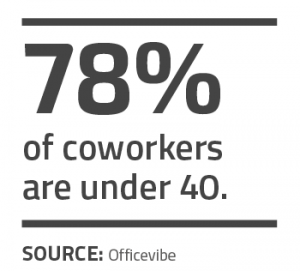 If a person decides to ‘go it alone’, they need to buy furniture, get phone and internet connected, purchase a printer and other tech components and arrange for meeting rooms. Moreover, if a person owns and manages their own office, they need support if anything doesn’t work. The advantage of a coworking space is that a coworker doesn’t have to have much more than a laptop computer and a mobile phone. In fact, most administrative and operational tasks are taken care of (including making the coffee, pouring the beer and providing light meals).
If a person decides to ‘go it alone’, they need to buy furniture, get phone and internet connected, purchase a printer and other tech components and arrange for meeting rooms. Moreover, if a person owns and manages their own office, they need support if anything doesn’t work. The advantage of a coworking space is that a coworker doesn’t have to have much more than a laptop computer and a mobile phone. In fact, most administrative and operational tasks are taken care of (including making the coffee, pouring the beer and providing light meals).
Top coworking spaces offer things like:
- Very High-Speed WiFi
- Free Printing and Scanning
- Audio/Video Conferencing
- Complimentary Beverages
- Full Kitchenettes
- Meeting Rooms and Private Offices
- Mail Distribution
- Back-up phone support
High internet speeds and multiple WiFi network connections are a must. The fastest internet speeds are found in North America and Europe. Bandwidths are generally higher in bigger cities than rural areas. Larger coworking spaces offer faster internet connections than smaller ones.
Coworking spaces provide their members with an average of five WiFi access points and very strong security protocols. In case of total outages of internet, roughly half of coworking spaces are also covered by an alternative internet provider.
Bank Branch Office Advantages
According to Christopher S. Rollyson and Associates, “Bank branch coworking transforms and amplifies the business development potential of bank branches. It engages clients in physical branches and an online forum to knit a rich community in stages. The combined physical/digital community attracts highly desirable clients and prospects by engaging them with relationship managements very efficiently. It repurposes space in optimal bank branches to serve as coworking space for desirable mobile knowledge workers.”
Beyond just the space, technical capabilities and secure networks, coworking spaces can also be used by the bank to provide educational events customized to small business and personal banking needs. Banks could also help tenants with events to generate prospects for the coworker tenants.
Local coworking spaces in underutilized branches will result in far more visits to the branch than under normal circumstances. While traditional banking becomes more of a support capability in the background, it is available when needed.

Fractional Marketing for Financial Brands
Services that scale with you.

Industry Cloud for Banking from PwC
PwC’s Industry Cloud for Banking applies our deep industry knowledge to your specific business needs
Bank Branch Coworking Examples
One of the first examples of banks entering the coworking market was Poland’s Idea Bank, which started to turn branches into office space for small businesses in 2016. The bank reconfigured some of their sites, offering free access to coworking space, conference rooms, Wi-Fi, office facilities and beverages.
According to Idea Bank, almost half of their visitors use Idea Hubs at least once a week. The vast majority of coworkers consider the location as a place to work (as opposed to bank), conduct meetings, hold training sessions and network. Idea Bank has even expanded the coworking concept to train cars, where meetings can be held on the way to work.
One of the more ambitious examples of a coworking space is provided by Virgin Money Lounges in the U.K. Spread over three floors, the Sheffield Lounge is one of eight locations, providing a game area with two full-size ten-pin bowling lanes, table football, air hockey, a pool table, and children’s playroom. There’s also a library, bar, tweed sofas, and enough connection points to power dozens of phones, tablets, or laptops.
There is a cafe with diner-style booths, a cinema, large flat screen televisions and the required free Wi-Fi and private meeting rooms that can be reserved. There is even a lounge with an airliner-themed decor, complete with ambient overhead lighting and airline windows.

In 2018, Citizens Bank of Edmond, Oklahoma introduced a coworking space in one of it’s branches for small-business customers, called ‘Vault 405‘. The open space environment includes wireless charging stations, conference rooms and a podcast studio. According to CEO Jill Castilla, the intention is to provide a win-win for the bank as well as the small businesses. Through interaction and partnership, the small businesses can benefit from more customized banking services while the bank can learn more about the needs of their tenants face to face.
By converting underutilized branch space into an earning asset, it also provides a visible example of the community focus of the bank. While it is believed that deposits and loans can be generated from tenants, traditional selling of services is not as important as advising tenants of the options available for their unique needs. Nonprofit businesses with accounts at Citizens Bank can use these spaces free of charge. Monthly memberships are available at several levels for other businesses.
An exciting side benefit of bringing multiple and varied small businesses together is that they can be customers of each other — web developers, lawyers and programmers can interact with social media marketers or small ad agencies.
One thing that seems certain is that the concepts underlying coworking — flexible, high-tech and fully supported office space with shared tenant resources — are here to stay. With more and more people starting new businesses and needing support, financial institutions can provide a valuable (and convenient) resource that can generate new business, build relationships and improve community trust and loyalty.
With so much unused and underused space in branch systems today, this may be one of the lowest cost and highest potential return options available.

